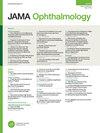Ophthalmologic diagnosis of exacerbation of idiopathic pulmonary arterial hypertension.
引用次数: 6
Abstract
Comment. With the widespread adoption of SD-OCT in diagnosing and monitoring retinal disease, ORT has become a more commonly recognized occurrence in eyes with focal disruptions of the outer retina related to multiple diagnoses. These structures appear to represent rearrangement of the photoreceptor layer in response to injury, in which surviving photoreceptors form new lateral connections with neighboring cells. Most commonly, ORT is observed in eyes with choroidal neovascularization due to diagnoses such as neovascular AMD, pseudoxanthoma elasticum, multifocal choroiditis, and central serous chorioretinopathy, but it has also been described in nonneovascular disorders such as AMD with geographic atrophy, retinal detachment, Bietti crystalline retinopathy, and retinitis pigmentosa. In eyes undergoing treatment with intravitreal anti–vascular endothelial growth factor, ORT is typically found in areas in which, prior to treatment, there had been substantial intraretinal fluid that presumably damaged the outer retinal architecture. This case illustrates the relative stability of ORT during a multiyear follow-up period. Eye-tracked and curved en face SD-OCT was helpful in documenting this stability. We have observed similar stability in many eyes with ORT, most commonly in eyes receiving long-term intravitreal anti–vascular endothelial growth factor therapy for neovascular AMD. As described previously, the volume of presumed fluid within the ORT structures may transiently fluctuate in response to intravitreal anti– vascular endothelial growth factor, but the number and distribution of the structures typically remain constant. This particular case illustrates a gradual but slow decrease in the size of the ORT structures, presumably due to progressive photoreceptor atrophy. The stability of ORT during years of follow-up further supports the concept that these structures themselves are not a sign of ongoing neovascular activity. Awareness of ORT is important so that its presence is not mistaken for a sign of leakage, potentially leading to unnecessary treatment.特发性肺动脉高压加重的眼科诊断。
本文章由计算机程序翻译,如有差异,请以英文原文为准。
求助全文
约1分钟内获得全文
求助全文

 求助内容:
求助内容: 应助结果提醒方式:
应助结果提醒方式:


